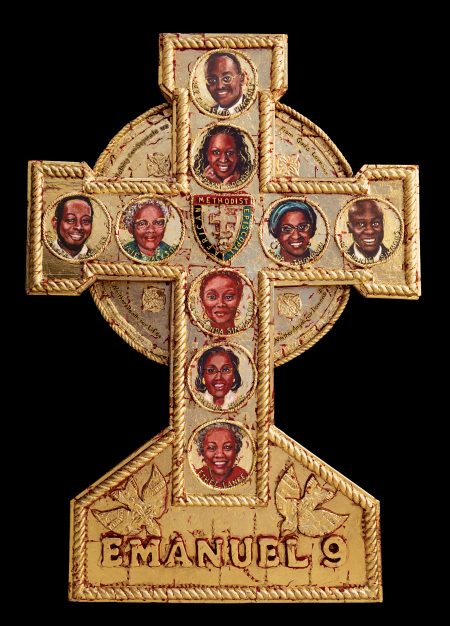Nothing can separate us from the love of God, neither death nor life, nor angels nor demons… Rom. 8:38
The Emanuel African Methodist Episcopal Church, known as “Mother Emanuel”, was founded in 1816 in Charleston, South Carolina. It is one of the oldest continuous black congregations in the United States. Though free blacks and slaves were permitted to worship in white churches, in the early 19th century Southern state laws and local ordinances required lawfully recognized churches to be controlled by whites. When a Methodist Episcopal Church decided to construct a hearse barn on a black burial ground, Morris Brown, a free black man, left his predominantly white congregation in protest. About 4000 black members from this and other Methodist churches joined him in starting the Hampstead Church which became part of the African Methodist Episcopal denomination. The AME Church was founded in Philadelphia in 1816 when Rev. Richard Allen broke from a largely white Methodist Episcopal Church to create this first fully independent black denomination.
The history of Mother Emanuel is one of perseverance in the face of adversity and racial hostility. Brown and other ministers of the church were jailed for violating the South Carolina requirement that free blacks and slaves could not meet or worship together without white supervision. In 1822, the church was burned to the ground after white authorities learned of a planned slave revolt under the leadership of Denmark Vessey, one of the Hampstead’s founders and leaders. It was suspected that the church was the planners’ meeting place. Over 300 alleged participants in the plot were arrested; Vessey along with 34 others were executed following secret trials. The building was torched in retribution for its presumed role in hosting the trouble makers. Rev. Brown was imprisoned though never convicted. Released after a number of months, he and several other prominent members fled to Philadelphia. Others stepped forward to reconstitute the congregation. However, in 1834, in response to Nat Turner’s slave rebellion, Charleston outlawed all-black churches. The AME congregation met in secret until after the Civil War when a new church was built and renamed “Emanuel” which means: God is with us.
Again, tragedy struck. An earthquake demolished the building in 1886. The current brick and stucco building was built in 1892 on the north side of Calhoun Street with other Post Civil War churches because blacks were not welcome on the south side. Emanuel continued as a leader in anti-racist activities. In 1909 Booker T. Washington, president of Tuskegee Institute and a nationally known leader in the black community, spoke at Emanuel. Fifty years later, Dr. Martin Luther King,Jr would speak at the church urging people to register and vote. In 1969, King’s widow, Coretta Scott King, led a march of 1500 demonstrators to the church in support of striking hospital workers in Charleston. When they arrived at the church, they faced bayonet wielding members of the South Carolina National Guard who supervised the arrest of the church’s pastor and 900 demonstrators.
On the evening of June 17, 2015, a young white man, Dylann Roof, walked into the church and sat down to join the weekly Wednesday Bible study/prayer group. Though a stranger, he was welcomed. After an hour with the group, he shot and killed nine people: The Rev. Clementa Pinckney, the church’s beloved pastor and respected state Senator; Myra Thompson, the study group’s leader; Cynthia Hurd; Depayne Middleton-Doctor; Sharonda Coleman-Singleton; Susie Jackson; Tywanza Sanders; Ethel Lance and Rev. Daniel Simmons. Later, photos of Roof surrounded by Confederate flags were discovered as well as a manifesto detailing his racist views and his hope that his murderous act would start a race war. It had the opposite effect. Facing Roof after his arrest, the victims’ families tearfully addressed him with words not of hatred or revenge but of forgiveness and love. As a result, Governor Nikki Haley called upon the state legislature to remove the controversial Confederate flag that had flown in view of the Capitol building. In early 2017 Roof was found guilty in a federal court.

